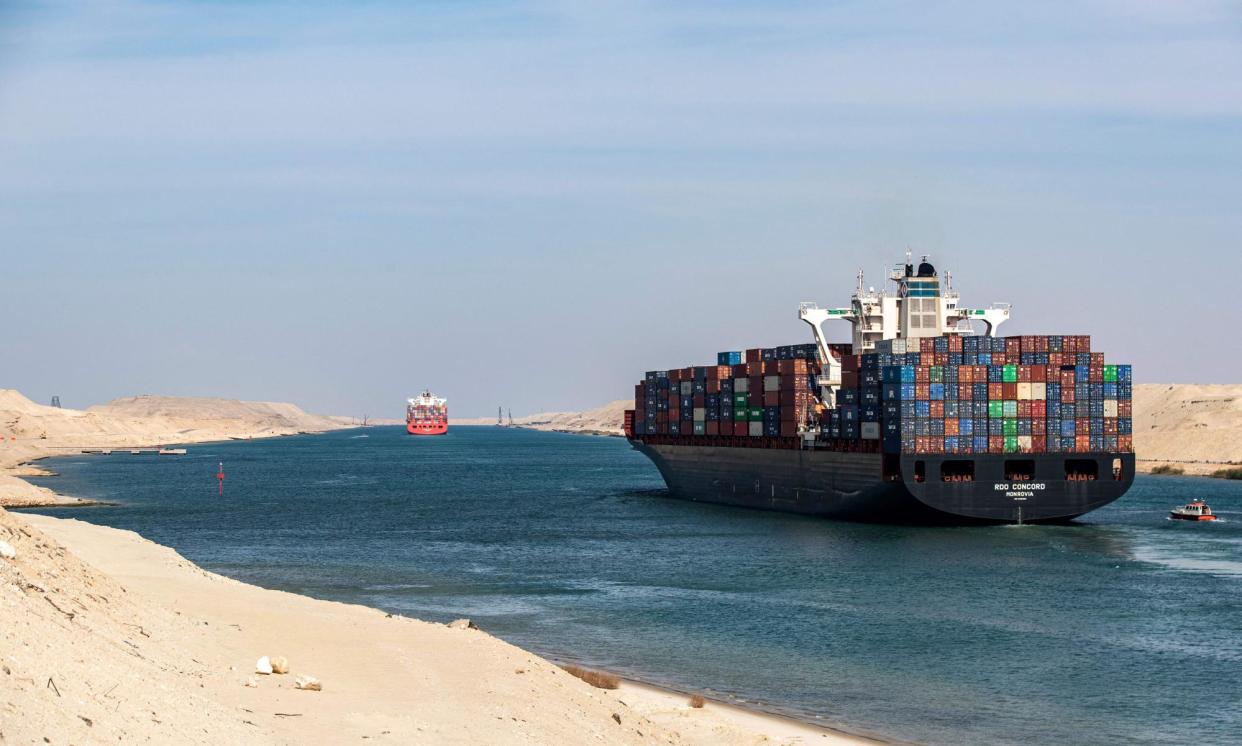What is the Red Sea crisis, and what does it mean for global trade?

The world’s largest shipping firms are continuing to pause shipments through the Red Sea after attacks by Houthi rebels along the crucial international trade route.
As container ships are diverted around the Cape of Good Hope on the southern tip of Africa, adding thousands of miles to journeys, the disruption is driving up the cost of shipments from Asia to Europe, raising the prospect of a renewed inflation shock for the world economy.
What is happening in the Red Sea?
Iran-backed Houthi rebels in Yemen have significantly stepped up a campaign of attacks against commercial vessels in the Bab-el-Mandeb strait between the Arabian peninsula and the Horn of Africa since late November.
Launched in response to Israel’s bombardment of Gaza, the attacks have escalated in the past week. Helicopters launched from US navy warships were used to repel an attack by militants on a ship owned by Maersk over the weekend, leading the Danish shipping line to continue to pause all cargo movement through the area until further notice.
Germany’s Hapag-Lloyd has also said its container ships would continue to avoid the route, which is a central artery for global trade on the passage from Asia to Europe via the Suez canal and the Mediterranean.
How significant is the Red Sea trade route?
The Suez canal handles about 12% of global trade and is accessed by vessels travelling from Asia via the 30km wide Bab-el-Mandeb strait. About half of freight shipped through the canal is made up of containerised goods. The route also provides a vital passage for shipments of oil from the Persian Gulf to Europe and North America.
Rerouting shipments around the Cape of Good Hope adds about 3,000-3,500 nautical miles (6,000km) to journeys connecting Europe with Asia, adding about 10 days to the duration of the trip, according to the Dutch bank ING.
With the prospect of lengthier shipping times, there could be a knock-on impact for turnaround times at ports in the UK and large European hubs such as Rotterdam, Antwerp and Hamburg.
Could it drive up inflation?
Redirecting ships is expected to cost up to $1m in extra fuel for every round trip between Asia and Europe, while insurance costs are also rising, adding to the overall cost of shipments.
Tankers transporting diesel and jet fuel from the Middle East and Asia are being diverted, while container shipments of consumer goods, commodities, clothing and food are also likely to be delayed.
Global oil prices rose on Wednesday as concerns over delays in the Red Sea were compounded by reports of disruption to Libya’s biggest oilfield. However, crude prices have remained relatively stable and are still significantly lower than in recent months, having fallen by almost $20 a barrel since the autumn.
Shipping costs can have a big inflationary impact. During the Covid pandemic, the International Monetary Fund estimated that global supply chain bottlenecks added about 1 percentage point to inflation. During normal times, freight costs contribute about 7% of the costs of long-haul imports. This jumped as high as 25% during the Covid disruption.
Rhys Davies, a former government trade adviser who now advises clients at the consultancy firm Flint Global, said freight costs had clearly been affected by tensions in the Red Sea, but that the impact on inflation would probably be limited.
“The effect feeds into the economy pretty slowly, taking about 12 months after the spike [in shipping costs,” he said. “So if the disruption is time-limited, as we would expect, it will probably be drowned by wider disinflationary impacts.”
How much does context matter?
Unlike when the Suez canal was blocked by the Ever Given container ship in 2021, triggering mass problems for world trade, the economic backdrop to the current Red Sea disruption is markedly different.
Two years ago global supply chains were creaking under the pressure of red-hot demand for manufactured goods from consumers who were blocked from spending on services by lockdown restrictions, while factory output and global freight were unable to keep pace.
Today, inflation is cooling as the world’s leading central banks use higher interest rates to crush demand. With households and businesses under pressure, world trade volumes and economic growth have slowed, raising the prospect of recessions in the US, UK and EU nations.
Although global freight costs have risen sharply in recent days thanks to the Red Sea disruption, they remain significantly lower than two years ago. The Shanghai Containerized Freight Index, the most widely used index for sea freight rates for imports from China worldwide, is down by more than half.
James Smith, an economist at ING, said: “It brings back memories of the pandemic when supply chains were obviously messed up, and there was the Suez canal blockage as well. The circumstances, at least for now, are quite different.”


